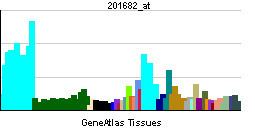Entrez 9512 | Ensembl ENSG00000105819 | |
 | ||
Aliases PMPCB, Beta-MPP, MPP11, MPPB, MPPP52, P-52, peptidase, mitochondrial processing beta subunit External IDs MGI: 1920328 HomoloGene: 3160 GeneCards: PMPCB | ||
Mitochondrial-processing peptidase subunit beta is an enzyme that in humans is encoded by the PMPCB gene. This gene is a member of the peptidase M16 family and encodes a protein with a zinc-binding motif. This protein is located in the mitochondrial matrix and catalyzes the cleavage of the leader peptides of precursor proteins newly imported into the mitochondria, though it only functions as part of a heterodimeric complex.
Contents
Structure
The Mitochondrial-processing peptidase subunit beta precursor protein is 54.4 KDa in size and composed of 489 amino acids. The precursor protein contains a 45 amino acid N-terminal fragment as mitochondrion targeting sequence. After cleavage, the matured PMPCB protein is 49.5 KDa in size and has a theoretical pI of 5.76.
Function
Mitochondrial-processing peptidase (MPP) is a metalloendopeptidase, containing two structurally related subunits, mitochondrial-processing peptidase subunit alpha and subunit beta, working in conjunction for its catalytic function. Containing the catalytic site, the beta subunit PMPCB protein cleaves presequences (transit peptides) from mitochondrial protein precursors and releases of N-terminal transit peptides from precursor proteins imported into the mitochondrion, typically with Arg in position P2.
Interactions
As the beta subunit of Mitochondrial-processing peptidase, PMPCB forms a heterodimer with the subunit Mitochondrial-processing peptidase subunit alpha. In addition, PMPCB has been shown to interact with PMPCA and Frataxin.
Clinical significance
The majority of mitochondrial proteins is nuclear-coded, which necessitates proper translocations of mitochondrial targeting proteins. Many mitochondrial proteins are synthesized in a precursor form that contains mitochondria targeting sequence. These precursors are usually cleaved by peptidases and proteases before they arrive their sub-organellar locations. It is likely that altered activity of the mitochondrial processing peptidases is essential to ensure the correct maturation of mitochondrial proteins and that altered activity of these proteases will have dramatic effects in the activity, stability and assembly of mitochondrial proteins. Evidences showed that MPP was involved in the proteolytic maturation of Frataxin, a protein responsible for iron homeostasis. Accordingly, MPP deficiency was shown to be involved in Friedreich ataxia, an autossomic recessive neurodegenerative disorder
